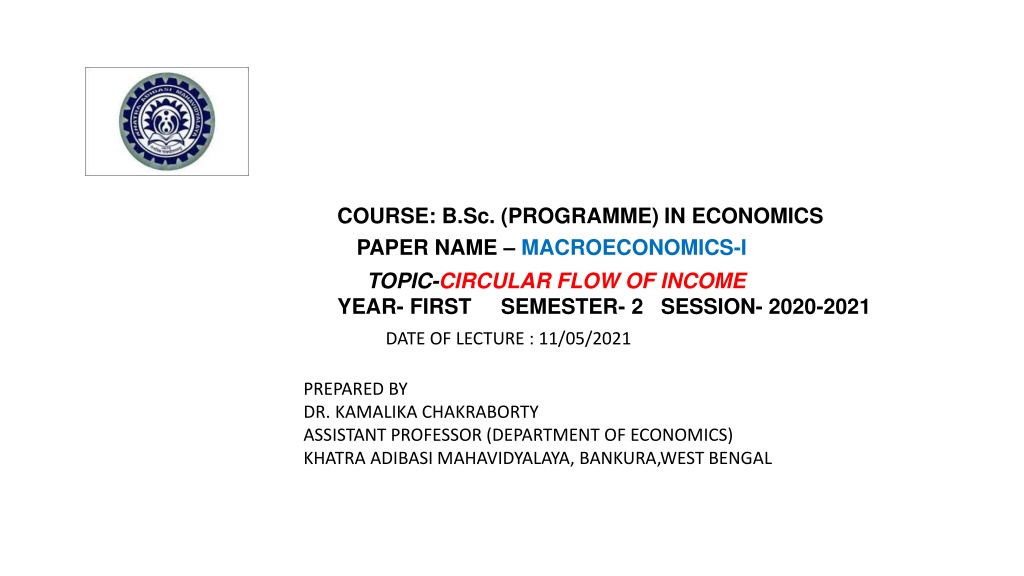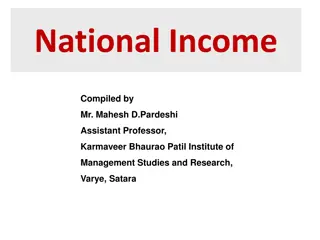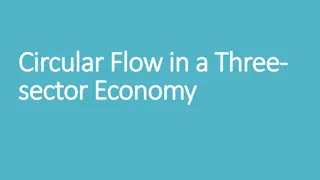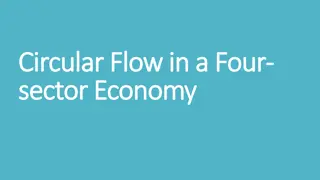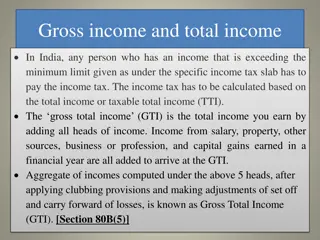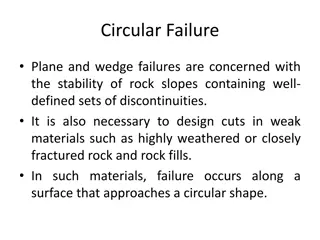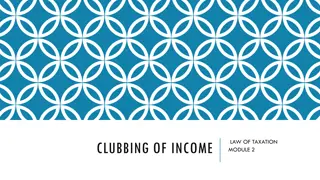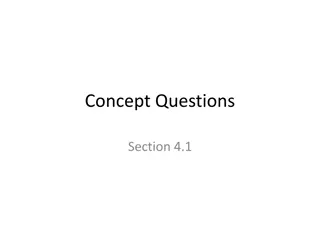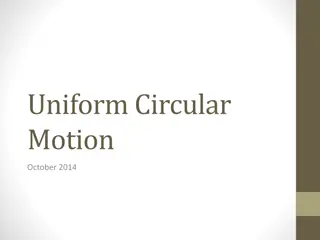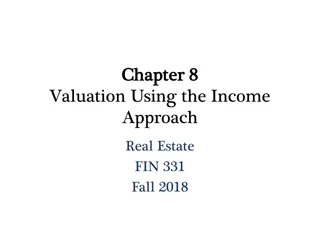Understanding Circular Flow of Income in Different Sector Economies
The circular flow of income concept explains the continuous flow of goods, income, and expenditure within an economy. It involves the distribution of income among production units and households through factors like land, labor, capital, and entrepreneurship. The flow of payments and receipts varies in two, three, and four sector economies, influencing factors such as consumption, savings, government spending, and foreign trade. This comprehensive overview sheds light on the dynamics of income circulation in different economic setups.
Download Presentation

Please find below an Image/Link to download the presentation.
The content on the website is provided AS IS for your information and personal use only. It may not be sold, licensed, or shared on other websites without obtaining consent from the author. Download presentation by click this link. If you encounter any issues during the download, it is possible that the publisher has removed the file from their server.
E N D
Presentation Transcript
COURSE: B.Sc. (PROGRAMME) IN ECONOMICS PAPER NAME MACROECONOMICS-I TOPIC-CIRCULAR FLOW OF INCOME YEAR- FIRST SEMESTER- 2 SESSION- 2020-2021 DATE OF LECTURE : 11/05/2021 PREPARED BY DR. KAMALIKA CHAKRABORTY ASSISTANT PROFESSOR (DEPARTMENT OF ECONOMICS) KHATRA ADIBASI MAHAVIDYALAYA, BANKURA,WEST BENGAL
What is Circular Flow of Income? The circular flow means the unending flow of production of goods and services, income, and expenditure in an economy. It shows the redistribution of income in a circular manner between the production unit and households. These are land, labour, capital, and entrepreneurship. The payment for the contribution made by fixed natural resources (called land) is known as rent. The payment for the contribution made by a human worker is known as wage. The payment for the contribution made by capital is known as interest. The payment for the contribution made by entrepreneurship is known as profit.
Circular Flow of Income in a Two-Sector Economy It is defined as the flow of payments and receipts for goods, services, and factor services between the households and the firm sectors of the economy. Total expenditure (E) = C + I Total income (Y) = C + S
Circular Flow of Income in a Three-Sector Economy It is defined as the flow of payments and receipts for goods, services, and factor services among the households, the firm sectors and the government. Total expenditure (E) = C + I + G Total income (Y) = C + S + T Since expenditure incurred must be equal to the income received (Y), we have C + I = C + S or, I = S
Circular Flow of Income in a Four-Sector Economy It is defined as the flow of payments and receipts for goods, services, and factor services among the households, the firm sectors ,the government and the foreign sector. National Income = C + I + G + NX where NX represents net exports, X-M. Since national income can be either consumed, saved or paid as taxes to the Government we have C + I + G + NX = C + S + T
